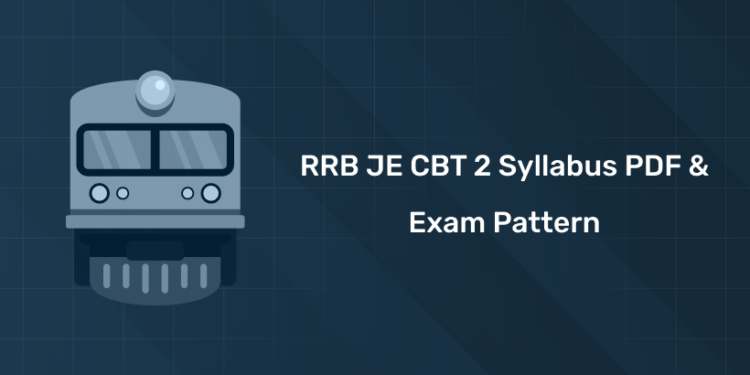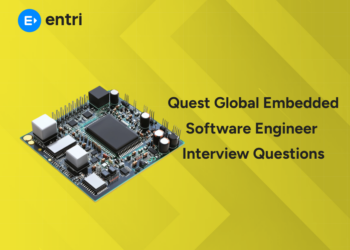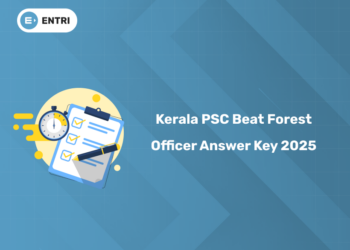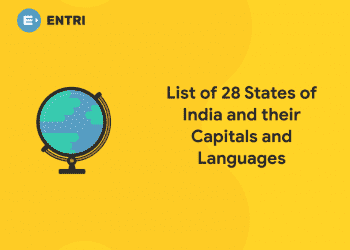Table of Contents
The RRB JE CBT 2 Exam 2025 is scheduled for March 19 and 20, 2025. As candidates prepare for this stage, understanding the syllabus and exam pattern becomes crucial. In this blog, we break down the RRB JE CBT 2 syllabus, offering a detailed guide to help you plan your preparation effectively for the upcoming exam. Get the syllabus now!
ENROLL NOW, PREPARE FOR CBT 2!
RRB JE CBT 2 Recruitment 2025 Overview
| RRB JE Recruitment Overview 2025 | |
| Organization Name | Railway Recruitment Board (RRB) |
| Post Name | Junior Engineer, Depot Material Superintendent, Chemical & Metallurgical Assistant, Chemical Supervisor/ Research and Metallurgical Supervisor/ Research |
| No of Vacancies | 7951 |
| RRB JE CBT 1 Exam Dates | 16th to 18th December 2024 |
| RRB JE CBT 1 Result 2025 | February 2025 |
| RRB JE CBT 2 Exam Date 2025 | 19th and 20th March 2025 |
| Selection Process | CBT 1, CBT 2, DV and Medical Exam |
| Official Website | https://rrbcdg.gov.in/ |
RRB JE CBT 2 Exam Pattern 2025
1: Who was the first woman President of India?
The RRB JE CBT 2 Exam 2025 will consist of 150 multiple-choice questions (MCQs), each carrying 1 mark. The subjects included are General Awareness, Physics & Chemistry, Basics of Computers and Applications, Basics of Environment and Pollution Control, and Technical Abilities.
- Total Questions: 150
- Total Marks: 150
- Duration: 2 hours (120 minutes)
- Negative Marking: 1/3rd mark for each incorrect answer
- Minimum Qualifying Marks: 40%
Here’s the detailed exam pattern:
| Subject | No. of Questions | Marks | Duration |
|---|---|---|---|
| General Awareness | 15 | 15 | 120 mins |
| Physics & Chemistry | 15 | 15 | |
| Basics of Computers and Applications | 10 | 10 | |
| Basics of Environment and Pollution Control | 10 | 10 | |
| Technical Abilities | 100 | 100 | |
| Total | 150 | 150 | 120 mins |
Free UPSKILLING Courses!
Take your first step toward mastering in-demand skills, acing interviews, and securing top-tier jobs with Entri's free upskilling courses.
Start Learning!RRB JE CBT 2 Syllabus 2025
The RRB JE CBT 2 Syllabus for 2025 covers a wide range of topics across various subjects, including General Awareness, Physics, Chemistry, General Intelligence, and Technical subjects related to the engineering discipline. Find the detailed syllabus here!
RRB JE Syllabus for General Awareness
- Knowledge of Current affairs
- Indian Geography
- Culture and history of India including freedom struggle
- Indian Polity and Constitution
- Indian Economy
- Environmental issues concerning India and the World, Sports, General scientific and technological developments etc.
RRB JE Syllabus for Physics and Chemistry
In this section, you need to solve questions on 12th standard Physics and Chemistry. Therefore, open your 10th standard physics and chemistry books and refer to them for this section as there will be 15 questions from it.
RRB JE Syllabus for Basics of Computers and Applications
- Computers and their architecture
- Input & Output devices
- MS Office
- Storage devices
- Operating Systems
- Internet and Email
- Websites & Web Browsers
- Networking
- Computer Virus
RRB JE Syllabus for Basics of Environment and Pollution Control
- Basics of Environment
- The adverse effect of environmental pollution
- Pollution control strategies
- Types of pollution
- Waste Management
- Global warming
- Acid rain
- Ozone depletion
RRB JE Syllabus Technical Abilities
Engineering Mechanics: Resolution of forces, Equilibrium and Equilibrant, parallelogram law of forces, triangle law of forces, polygon law of forces and Lami’s theorem, couple and moment of a couple, condition for equilibrium of rigid body subjected to number of coplanar non-concurrent forces, definition of static friction, dynamic friction, derivation of limiting angle of friction and angle of repose, resolution of forces considering friction when a body moves on horizontal plane and inclined plane, calculation of moment of inertia and radius of gyration of : (a) I-Section (b) channel section (c) T-Section (d) L-Section (Equal & unequal lengths) (e) Z-Section (f) Built up sections (simple cases only), Newton’s laws of motion (without derivation), motion of projectile, D’Alembert’s principle, definition law of conservation of energy, law of conservation of momentum.
Material Science : Mechanical properties of engineering materials – tensile strength, compressive strength, ductility, malleability, hardness, toughness, brittleness, impact strength, fatigue, creep resistance. Classification of steels, mild steel and alloy steels. Importance of heat treatment. Heat treatment processes – annealing, normalizing, hardening, tempering, carburizing, nitriding and cyaniding.
Strength of Materials : Stress, strain, stress strain diagram, factor of safety, thermal stresses, strain energy, proof resilience and modules of resilience. Shear force and bending moment diagram – cant leaver beam, simply supported beam, continuous beam, fixed beam. Torsion in shafts and springs, thin cylinder shells.
Machining : Working principle of lathe. Types of lathes – Engine lathe – construction details and specifications. Nomenclature of single point cutting tool, geometry, tool signature, functions of tool angles. General and special operations – (Turning, facing, taper turning thread cutting, knurling, forming, drilling, boring, reaming, key way cutting), cutting fluids, coolants and lubricants. Introduction to shaper, slotter, plainer, broaching, milling and manufacture of gears, heat treatment process applied to gears.
Welding : Welding – Introduction, classification of welding processes, advantages and limitations of welding, principles of arc welding, arc welding equipment, choice of electrodes for different metals, principle of gas (oxy-acetylene) welding, equipment of gas welding, welding procedures (arc & gas), soldering and brazing techniques, types and applications of solders and fluxes, various flame cutting processes, advantages and limitations of flame cutting, defects in welding, testing and inspection modern welding methods, (submerged, CO2, atomic – hydrogen, ultrasonic welding), brief description of MIG & TIG welding.
Grinding & Finishing Process: Principles of metal removal by grinding, abrasives, natural and artificial, bonds and binding processes, vitrified, silicate, shellac rubber, grinding machines, classification: cylindrical, surface, tool & cutter grinding machine, construction details, relative merits, principles of centreless grinding, advantages & limitations of centreless grinding work, holding devices, wheel maintenance, balancing of wheels, coolants used, finishing by grinding, honing, lapping, super finishing, electroplating, basic principles – plating metals, applications, hot dipping, galvanizing tin coating, parkerising, anodizing, metal spraying, wire process, powder process and applications, organic coatings, oil base paint, lacquer base enamels, bituminous paints, rubber base coating.
Metrology: Linear measurement – Slip gauges and dial indicators, angle measurements, bevel protractor, sine bar, angle slip gauges, comparators (a) mechanical (b) electrical (c) optical (d) pneumatic. Measurement of surface roughness; methods of measurements by comparison, tracer instruments and by interferometry, collimators, measuring microscope, interferometer, inspection of machine parts using the concepts of shadow projection and profile projection.
Fluid Mechanics & Hydraulic Machinery: Properties of fluid, density, specific weight, specific gravity, viscosity, surface tension, compressibility capillarity, Pascal’s law, measurement of pressures, concept of buoyancy. Concept of Reynold’s number, pressure, potential and kinetic energy of liquids, total energy, laws of conservation, mass, energy and momentum, velocity of liquids and discharge, Bernoulli’s equation and assumptions, venturimeters, pitottube, current meters. Working principle & constructional details of centrifugal pump, efficiencies – manometric efficiency, volumetric efficiency, mechanical efficiency and overall efficiency, cavitation and its effect, working principle of jet & submersible pumps with line diagrams.
Industrial Management: Job analysis, motivation, different theories, satisfaction, performance reward systems, production, planning and control, relation with other departments, routing, scheduling, dispatching, PERT and CPM, simple problems. Materials in industry, inventory control model, ABC Analysis, Safety stock, re-order, level, economic ordering quantity, break even analysis, stores layout, stores equipment, stores records, purchasing procedures, purchase records, Bin card, Cardex, Material handling, Manual lifting, hoist, cranes, conveyors, trucks, fork trucks.
Thermal Engineering: Laws of thermodynamics, conversion of heat into work vice versa , laws of perfect gases, thermodynamic processes – isochoric, isobaric, isothermal hyperbolic, isentropic, polytrophic and throttling, modes of heat transfer, thermal conductivity, convective heat transfer coefficient, Stefan Boltzman law by radiation and overall heat transfer coefficient. Air standards cycles – Carnot cycle, Otto cycle, Diesel cycle, construction and working of internal combustion engines, comparison of diesel engine and petrol engine. Systems of internal combustion engine, performance of internal combustion engines. Air compressors their cycles refrigeration cycles, principle of a refrigeration plant.
RRB JE Syllabus for Computer Science and Information Technology
PC Software:
- MS-Windows, MS-Word, MS-Excel, MS-PowerPoint
Computer Fundamentals:
- Evolution of Computers
- Hardware & Software
- Internet
C Language:
- Structure
- Loop, Control Statements
- Arrays, Pointers
- Functions, Structure and Union
- Files
Computer Organisation:
- Number Systems
- Logic Gates, Flip-Flops
- Boolean Algebra
- DMA, Instruction Sets
Information Systems:
- Information Concepts
- Hardware & Software
- Overview of Communication Systems
- E-Commerce
Data Structure using C++:
- Object-Oriented Programming
- Data Structures (Stack, Queue, Pointers, Linked List)
- Searching & Sorting Algorithms
DBMS Fundamentals:
- BASIC
- Data Models
- RDBMS, Relational Algebra
- SQL (DDL, DML, DCL Statements)
- Creating Tables, Equi-Joins, Self Joins
- PL/SQL (Functions, Cursors, Triggers)
System Programming:
- Assemblers, Loaders, and Linkers
- Macro Processors, Compilers
Operating System using LINUX:
- Operating System Types, Features & Basic Architecture of Unix/Linux
- Unix File System & Structure
- Linux Commands for Files & Directories
- Filters and Pipes
- Process Management
- Creating and Editing Files with VI Editor
- System Administration
Web Technologies and Programming:
- Internet & Intranet
- Web Technologies (Bus, Ethernet, LAN, Routers, Gateways, etc.)
- Internet Service Providers, URL, Domain Names
- Email, Web Servers, Proxy Servers, Web Caches
- HTML Basics, Syntax and Rules
- Web Browsers and Internet Security
System Analysis and Design:
- System Components, Planning, Fact-Finding Techniques
- Structured Analysis, Data Flow Diagrams, Data Dictionary
- System Design: Input, Output, Files, Control, Program Specification
Data and Network Communication:
- Distributed Processing, Protocols, Standards
- OSI Model, Layers, TCP/IP Protocol
- Digital to Digital/Analog Conversion, Transmission
- Error Detection & Correction (VRC, LRC, CRC)
- Ethernet, Token Bus, Token Ring
Java Programming:
- JAVA Environment & JVM
- Data Types, Operators, Classes, Objects, Inheritance
- Threads, Thread Methods, Synchronization
- Applets, Passing Parameters to Applets
Software Engineering:
- Software Development Lifecycle Models
- Prototyping, Verification, Validation
- Design Concepts: User Interface, System Design
- Software Testing, Types, Strategies, Debugging
- Software Project Management: Cost Estimation, Error Tracking, CASE Tools
RRB JE Syllabus for Civil & Allied Engineering
Engineering Mechanics:
- Force (Resolution, Moment, Composition)
- Equilibrium, Friction
- Centroid, Center of Gravity
- Simple Machines
Building Construction:
- Substructure, Superstructure
- Load Bearing, Framed, and Composite Structures
Building Materials:
- Masonry Materials (Stones, Bricks, Mortars)
- Timber, Glass, Fiber, PVC, Aluminum, Steel, etc.
Construction of Substructure:
- Job Layout, Earthwork, Foundation Types
- Dewatering, Cofferdams, Bearing Capacity
Construction of Superstructure:
- Masonry Types (Stone, Brick, Hollow Concrete Block)
- Vertical Communication (Stairs, Lifts, Escalators)
- Doors, Windows, Scaffolding, Shoring
Building Finishes:
- Floor Finishes, Process of Laying
- Wall Finishes, Plastering, Painting
- Roof Finishes, Roofing Materials, RCC
Building Maintenance:
- Cracks (Causes, Types, Repair Techniques)
- Settlement, Remedial Measures
- Re-baring Techniques
Building Drawing:
- Conventions (Lines, Symbols)
- Planning for Residential/Public Buildings
- Drawings (Plan, Elevation, Section, Site Plan)
- Perspective Drawing
Concrete Technology:
- Types/Grades of Cement
- Concrete Mix Design, Testing
- Special Concrete (Ready Mix, RCC, Pre-stressed, Fiber Reinforced)
Surveying:
- Chain and Compass Survey, Triangulation
- Leveling, Contouring, Area & Volume Measurement
- Theodolite Survey, Tacheometric Survey, Remote Sensing
Computer Aided Design (CAD):
- AutoCAD, Auto Civil, 3D Max Software
- CAD Commands for Plan, Elevation, Section, 3D Views
Geo-Technical Engineering:
- Foundation Design, Soil Properties (Permeability, Shear Strength)
- Bearing Capacity, Site Investigation, Subsoil Exploration
Hydraulics:
- Fluid Properties, Hydrostatic Pressure
- Fluid Flow through Pipes and Channels
- Hydraulic Machines
Irrigation Engineering:
- Hydrology, Reservoir Planning
- Percolation Tanks, Diversion Head Works
Mechanics of Structures:
- Stress, Strain, Shear Force
- Bending Moment, Strain Energy
- Analysis of Trusses, Stresses in Beams
Theory of Structures:
- Direct and Bending Stresses
- Fixed Beam, Continuous Beam, Moment Distribution
Design of Concrete Structures:
- Working Stress and Limit State Methods
- Design of Singly and Doubly Reinforced Sections, Slabs, T-Beams, Columns, Footings
Design of Steel Structures:
- Types of Sections, Steel Grades, IS Code
- Design of Tension and Compression Members, Steel Roof Trusses, Beams, Column Bases
Transportation Engineering:
- Railway Engineering, Track Geometry, Maintenance
- Bridge Engineering, Site Selection, Investigation
- Tunnel Engineering, Tunneling Methods, Equipment
Highway Engineering:
- Road Project Investigation, Geometric Design
- Pavement Construction, Traffic Engineering
- Maintenance and Repair of Roads
Environmental Engineering:
- Environmental Pollution and Control
- Water Supply, Sewage Management
- Solid Waste Management, Environmental Sanitation
Advanced Construction Techniques and Equipment:
- Fibers, Plastics, Advanced Concreting Methods
- Prefabricated Construction, Soil Reinforcing, Hoisting and Conveying Equipment
Estimating and Costing:
- Types of Estimates (Approximate, Detailed)
- Rate Analysis, Mode of Measurements
Contracts and Accounts:
- Types of Engineering Contracts, Tender Documents
- Payment, Specifications
RRB JE Syllabus for Electrical & Allied Engineering
-
Basic Concepts
- Concepts of resistance, inductance, capacitance, and the factors affecting them.
- Concepts of current, voltage, power, energy, and their units.
-
Circuit Laws
- Kirchhoff’s laws.
- Simple circuit solutions using network theorems.
-
Magnetic Circuit
- Concepts of flux, mmf, reluctance.
- Magnetic materials and calculations for different conductor configurations (straight, circular, solenoidal).
- Electromagnetic induction, self and mutual induction.
-
AC Fundamentals
- Instantaneous, peak, RMS, and average values of alternating waves.
- Representation of sinusoidal waveforms, simple series and parallel AC circuits (R.L. and C circuits).
- Resonance, tank circuit.
- Polyphase systems: star and delta connection, 3-phase power, DC and sinusoidal responses of R-L and R-C circuits.
-
Measurement and Measuring Instruments
- Measurement of power (1-phase and 3-phase, active and reactive) and energy, 2-wattmeter method for 3-phase power measurement.
- Measurement of frequency and phase angle.
- Ammeter, voltmeter (both moving coil and moving iron type), wattmeter extension, multimeter, megger, energy meters, AC bridges.
- Use of CRO, signal generator, CT, PT, and their uses.
- Earth fault detection.
-
Electrical Machines
- DC Machines: Construction, basic principles of DC motors and generators, characteristics, speed control, starting of DC motors, braking methods, losses, and efficiency of DC machines.
- 1-phase and 3-phase Transformers: Construction, principles of operation, equivalent circuit, voltage regulation, O.C. and S.C. tests, losses, efficiency, effect of voltage, frequency, and waveform on losses, parallel operation, autotransformers.
- 3-phase Induction Motors: Rotating magnetic field, principle of operation, equivalent circuit, torque-speed characteristics, starting and speed control, braking methods, effect of voltage and frequency variations.
- Synchronous Machines: Generation of 3-phase EMF, armature reaction, voltage regulation, parallel operation of alternators, synchronizing, active and reactive power control, starting, and applications of synchronous motors.
-
Generation, Transmission, and Distribution
- Types of power stations, load factor, diversity factor, demand factor, cost of generation, interconnection of power stations.
- Power factor improvement, types of tariffs, faults, short circuit currents for symmetrical faults.
- Switchgear and Protection: Rating of circuit breakers, principles of arc extinction by oil and air, H.R.C. fuses, protection against earth leakage and over-current, Buchholz relay, Merz-Price system for protection of generators and transformers, protection of feeders and busbars, lightning arresters, transmission and distribution systems, conductor material comparison, system efficiency, cable types and ratings.
-
Estimation and Costing
- Estimation of lighting schemes, electric installations for machines, relevant IE rules, earthing practices, and IE rules.
-
Utilization of Electrical Energy
- Illumination, electric heating, welding, electroplating, electric drives, and motors.
-
Basic Electronics
- Working of various electronic devices (PN junction diodes, transistors – NPN and PNP types, BJT, JFET).
- Simple circuits using these devices.
RRB JE Syllabus for Electronics & Allied Engineering
-
Electronic Components & Materials
- Conductors, semiconductors, and insulators.
- Magnetic materials, jointing and cleaning materials for underground copper cables and OFC.
- Cells and batteries (rechargeable and non-rechargeable).
- Relays, switches, MCB, and connectors.
-
Electronic Devices and Circuits
- PN junction diodes, thyristors, diode and triode circuits.
- Junction transistors, amplifiers, oscillators, multivibrators, counters, rectifiers, inverters, and UPS.
-
Digital Electronics
- Number systems and binary codes.
- Boolean algebra and logic gates.
- Combinational and sequential logic circuits.
- A/D and D/A converters, counters, and memories.
-
Linear Integrated Circuits
- Introduction to operational amplifiers, linear and non-linear applications.
- Voltage regulators, timers, phase-lock loops.
-
Microprocessor and Microcontroller
- Introduction to microprocessors, 8085 microprocessor working.
- Assembly language programming, peripherals, and other microprocessors.
- Microcontrollers.
-
Electronic Measurements
- Measuring systems and principles of measurement.
- Range extension methods, cathode ray oscilloscope, LCD, LED panels, transducers.
-
Communication Engineering
- Introduction to communication, modulation techniques, multiplexing techniques.
- Wave propagation, transmission line characteristics, OFC.
- Fundamentals of public address systems, electronic exchanges, radar, cellular and satellite communication.
-
Data Communication and Network
- Introduction to data communication, hardware, and interface.
- Introduction to networks, networking devices, LAN, WAN, internet working.
-
Computer Programming
- Programming concepts, fundamentals of C and C++.
- Operators in C and C++, control statements, functions, arrays, strings, pointers, file structures, data structure, and DBMS.
-
Basic Electrical Engineering
- DC circuits, AC fundamentals, magnetic, thermal, and chemical effects of electric current.
- Earthing – installation, maintenance, and testing.
RRB JE Syllabus for CMA
1. Measurements, Units, and Dimensions
- Types of errors in measurements
- Significance of accuracy in measurement
2. Light
- Basic principles of light
- Reflection, refraction, laws of reflection, total internal reflection
- Interference, diffraction, and polarization
- Formula for magnification of microscope and telescope
- Electromagnetic spectra
3. Heat
- Heat as energy, sources of heat, transmission of heat
- Expansion of solids, liquids, and gases
- Temperature and thermal equilibrium
- Different Scales of Temperature
- Calorimetry and applications of specific heat
- Latent heat
- Anomalous expansion of water and its significance in nature
- Combustion, calorific value, specific heat of gases
4. Sound
- Sources of sound and propagation of sound
- Velocity of sound in different media/substances
- Characteristics of sound
- Reflection of sound, echo, resonance, sonar, Doppler effect
5. Mechanics
- Scalars and vectors
- Types of motion
- Friction, Newton’s laws of motion, momentum
- Equations of motion (under gravity and freely falling)
- Projectile motion, range
- Laws of floatation
- Work, power, and energy
- Conservation of energy
- Center of mass and center of gravity
- Stability and equilibrium
- Universal law of gravitation and relation between ‘g’ and ‘G’
- Circular motion, Kepler’s laws
- Elasticity and Hooke’s law
6. Magnetism
- Magnetic field, uniform and non-uniform magnetic fields
- Magnetic induction and magnetic lines of force
- Magnetic pole strength, magnetic moment
- Inverse square law of magnetism
- Magnetic properties of materials and classification
7. Electricity & Electro Magnetism
- Electric charge, field, intensity, potential, potential difference
- Simple electric circuits
- Conductors, non-conductors/insulators
- Coulomb’s inverse square law
- Primary and secondary cells
- Ohm’s law and its limitations
- Resistances in series and parallel, EMF of a circuit, specific resistance
- Kirchhoff’s laws, relation between electric potential and energy
- Electric power (wattage), heating effect of electric current, Joule’s law
- Ampere’s law, magnetic force on moving charged particles and conductors
- Fleming’s left-hand rule, electric motor
- Electromagnetic induction – Faraday’s law, electromagnetic flux, Lentz’s law
- Generators, alternating currents, inductance, self and mutual inductance, transformer principles
8. Modern Physics
- Discharge of electricity through gases, cathode rays, anode rays and their properties
- X-rays, atomic models (JJ Thomson, Rutherford, Bohr’s models)
- Atomic nucleus, structure, and mass defect
- Radioactivity, alpha, beta, and gamma radiation
- Applications of radioactivity, half-life period, isotopes, isobars, isotoners
- Artificial radioactivity, radioisotopes, and their uses
- Nuclear reactions (fission and fusion), atomic bomb, hydrogen bomb
9. Electronics and Communications
- Semiconductors, diode, p-n junction characteristics
- Transistor (pnp & npn characteristics and uses)
- Zener diode characteristics
- Simple electronic circuits, logic gates, modulation and demodulation
10. Matter
- States of matter, elements, compounds, and mixtures
- Methods of separation of mixtures
- Chromatography, behavior of gases, gas laws, mole concept
- Dalton’s, Avogadro’s, Berzelius laws
11. Chemical Reactions
- Physical and chemical changes, types of chemical reactions
- Physical and chemical properties of compounds
- Chemical calculations (NaOH, bleaching powder, baking soda, washing soda, plaster of Paris, etc.)
12. Acids, Bases, and Salts
- Strength and uses of acids and bases, neutralization
- Nature and uses of different salts, water of crystallization
- Oxidation and reduction, rancidity
- pH scale, role of pH in daily life (agriculture, medicine)
13. Atomic Structure
- Electromagnetic spectrum, atomic spectrum, Rutherford’s model of an atom
- Photoelectric effect, features of atomic spectra
- Bohr’s theory of the atom, de Broglie’s hypothesis, Heisenberg’s uncertainty principle
- Quantum mechanical model, quantum numbers, electronic configuration
14. Periodic Classification of Elements
- Characteristics of elements in groups and periods
- Classification of elements into s-block, p-block, d-block, f-block
- Periodic trends in physical and chemical properties
15. Chemical Bonding
- Ionic and covalent bonds, electronic configuration of noble gases
- Bonding in molecules (H2O, BF3, CH4, NH3), hybridization
- Hydrogen bonding
16. Carbon and its Compounds
- Hydrocarbons (alkanes, alkenes, alkynes), aromatic and aliphatic compounds
- Isomerism, functional groups, chemical properties
- Important organic compounds, carbohydrates, proteins, oils and fats, polymers
17. Environmental Chemistry
- Types of pollution, acid rains, ozone layer depletion, global warming
- Green chemistry as an alternative tool for reducing pollution
18. Metallurgy
- Occurrence of metals, minerals, ores, extraction methods
- Refining metals, electrolytic refining, corrosion prevention
- Alloys and their uses











